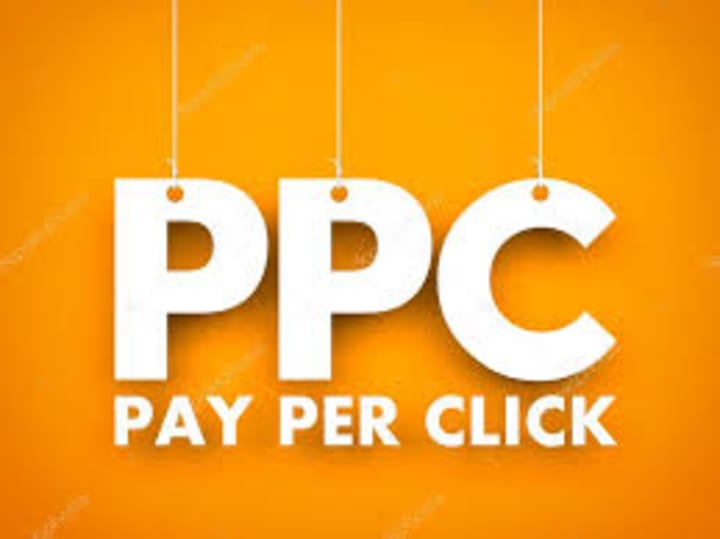Detailed Information on Pay-Per-Click Advertising (PPC)
Boost Your Business with Effective PPC Campaigns

Online advertisers who use pay-per-click (PPC) advertising pay each time a user clicks on one of their advertisements. It is an affordable way to increase business and send targeted traffic to your website. PPC advertising can be difficult, but you can design successful campaigns that produce results if you have the proper information and resources. Everything you need to know about PPC advertising, including what it is, the various PPC ad types, how to create successful campaigns, and how to assess their success, will be covered in this thorough guide.
What is PPC advertising?

PPC advertising is a form of online advertising that allows advertisers to place ads on search engine results pages (SERPs), websites, and social media platforms. Advertisers bid on keywords and phrases that are relevant to their target audience, and their ads are displayed to users who are searching for those keywords or browsing websites that are related to the keywords.
The different types of PPC ads
There are several types of PPC ads that you can use to promote your business:
Search ads: Search ads are the most common type of PPC ad. They are displayed on search engine results pages (SERPs) when users search for keywords that are relevant to your business. Search ads are text-based and typically include a headline, description, and a link to your website.
Display ads: Display ads are visual ads that are displayed on websites that are relevant to your business. They can be in the form of banner ads, image ads, or video ads. Display ads can be effective for building brand awareness and generating leads.
Social media ads: Social media ads are ads that are displayed on social media platforms such as Facebook, Twitter, LinkedIn, and Instagram. They can be in the form of sponsored posts, promoted tweets, or display ads. Social media ads can be effective for targeting specific demographics and interests.

Creating effective ad campaigns
Creating effective ad campaigns is crucial for the success of your PPC advertising. Here are some tips for creating effective ad campaigns:
Define your target audience: Before creating your ad campaign, you need to define your target audience. Who are they? What are their interests? What are their pain points? Knowing your target audience will help you create ads that are relevant and engaging.
Choose the right keywords: Choosing the right keywords is crucial for the success of your ad campaign. You need to choose keywords that are relevant to your business and have a high search volume. Use keyword research tools to find the right keywords.
Write compelling ad copy: Your ad copy should be compelling and engaging. It should grab the user's attention and entice them to click on your ad. Use attention-grabbing headlines, clear descriptions, and calls to action (CTAs) to encourage users to take action.
Use ad extensions: Ad extensions are additional pieces of information that can be added to your ads. They can include your phone number, location, and additional links to your website. Ad extensions can help your ads stand out and provide users with more information about your business.
Test and optimize your ads: Testing and optimizing your ads is essential for the success of your ad campaign. You should test different ad copy, keywords, and ad extensions to see what works best. Use analytics tools to track your ad performance and optimize your campaigns accordingly.

Measuring the success of PPC campaigns

Measuring the success of your PPC campaigns is crucial for determining their effectiveness and making informed decisions about future campaigns. Here are some metrics that you should
Once your PPC campaign is up and running, it's important to monitor its success to see if it's achieving your desired results. There are several metrics you can track to measure the effectiveness of your PPC campaign:
Click-Through Rate (CTR): This is the percentage of people who click on your ad after seeing it. A high CTR indicates that your ad is relevant and engaging to your target audience.
Conversion Rate: This is the percentage of people who take a desired action on your website, such as making a purchase or filling out a form. A high conversion rate means that your ad is not only attracting clicks but also leading to valuable actions.
Cost Per Click (CPC): This is the amount you pay each time someone clicks on your ad. Monitoring your CPC helps you to ensure that you are getting the most value for your advertising budget.
Return on Investment (ROI): This is a measure of how much revenue you are generating compared to the cost of your advertising campaign. A positive ROI means that your campaign is profitable and generating revenue for your business.
By regularly tracking these metrics, you can adjust your PPC campaign to optimize its effectiveness and ensure that you are achieving your desired results.
Conclusion:

Pay-per-click advertising is a powerful tool for businesses looking to attract more customers and increase their online visibility. By understanding the different types of PPC ads, creating effective ad campaigns, and measuring the success of your campaigns, you can ensure that your advertising budget is being used effectively and efficiently.
Remember that PPC advertising is an ongoing process, and it may take some time to find the right combination of ad copy, targeting, and keywords to achieve the best results. However, with patience and persistence, PPC advertising can be a valuable tool in your digital marketing toolkit, helping to drive growth and success for your business.
This essay extends the discussion from earlier ones.
About the Creator
Enjoyed the story? Support the Creator.
Subscribe for free to receive all their stories in your feed. You could also pledge your support or give them a one-off tip, letting them know you appreciate their work.






Comments
There are no comments for this story
Be the first to respond and start the conversation.